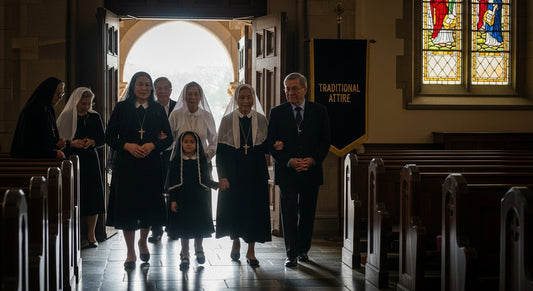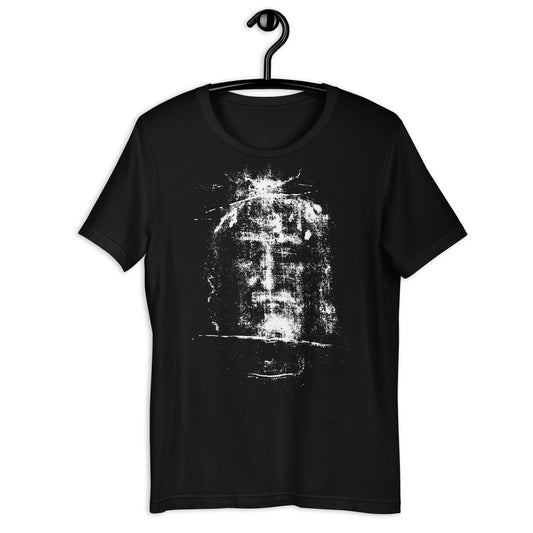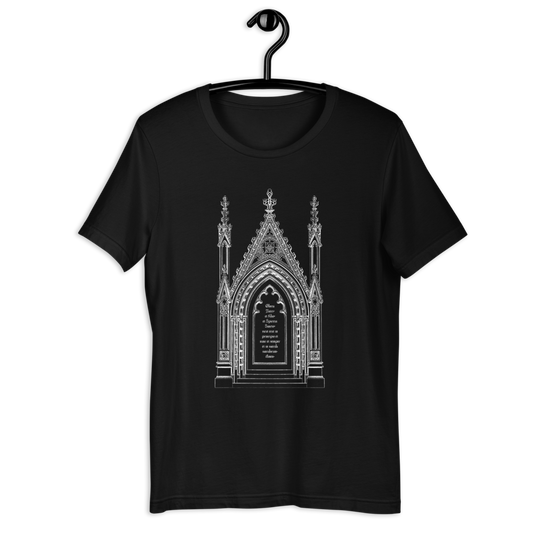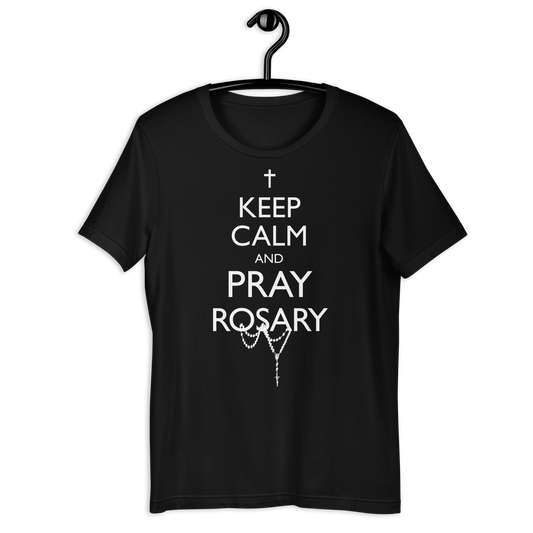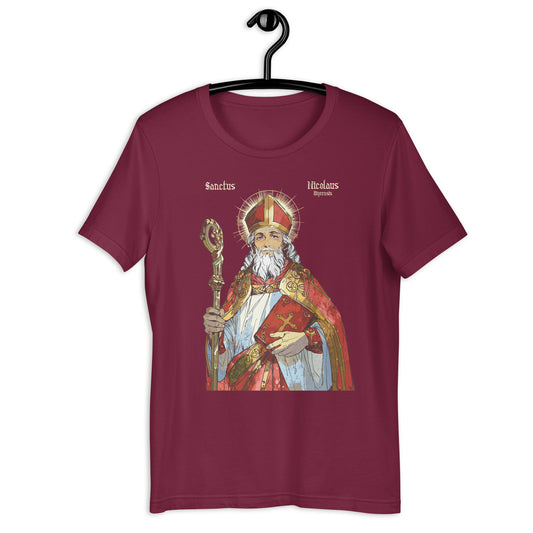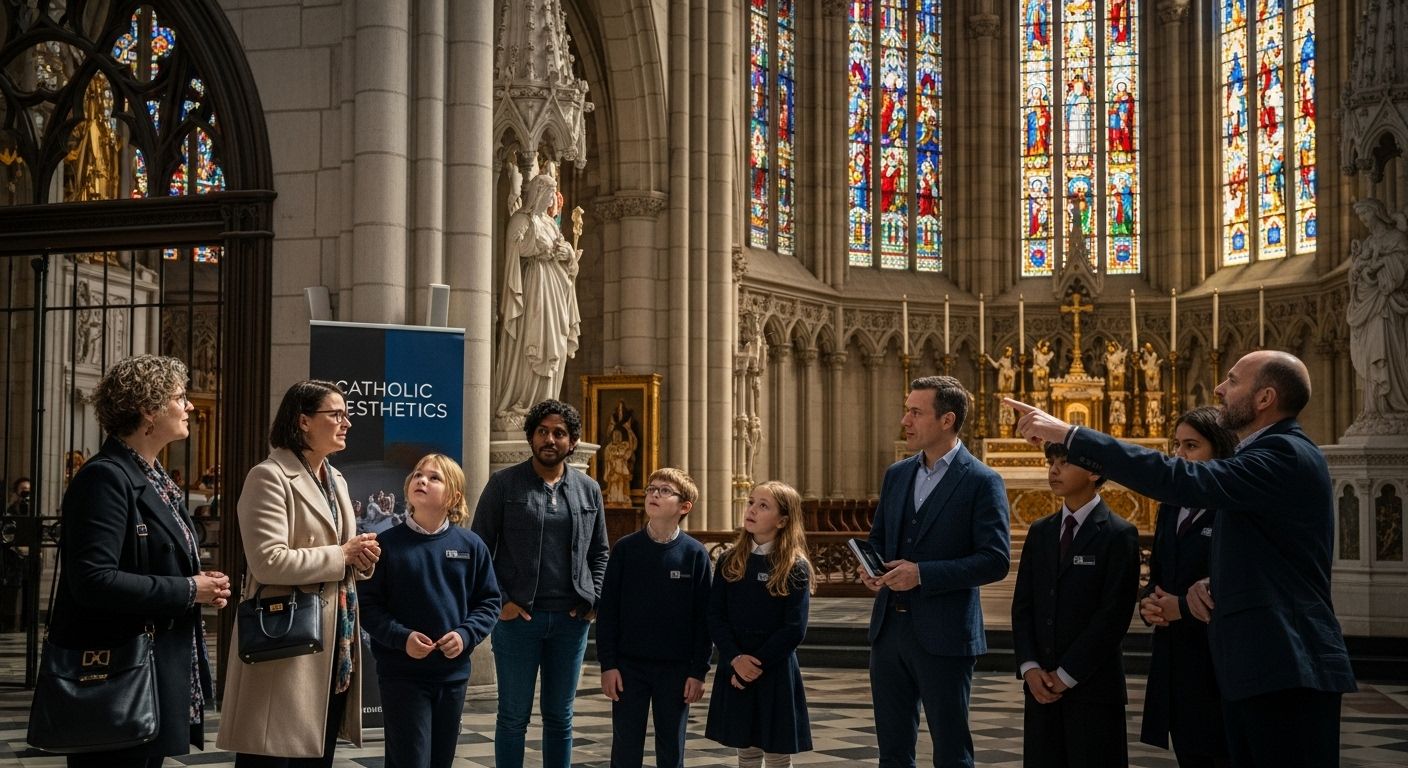
Catholic aesthetics shapes everything from the soaring arches of cathedrals to the subtle use of color in sacred art, weaving beauty and faith into a single visual language. Some might think these traditions are stuck in the past, only relevant to ancient rituals and old buildings. Yet Catholic aesthetics is thriving in the modern world, showing up in digital media, graphic design, and even social platforms, with contemporary artists using sacred symbolism to engage millions online.
Table of Contents
- Defining Catholic Aesthetics: Core Concepts And Principles
- The Importance Of Catholic Aesthetics In Religious Experience
- The Connection Between Faith And Artistic Expression In Catholicism
- Key Elements Of Catholic Aesthetics: Form, Beauty, And Meaning
- Contemporary Applications Of Catholic Aesthetics In Modern Life
Quick Summary
| Takeaway | Explanation |
|---|---|
| Beauty Reflects Divine Truth | Catholic aesthetics embody the belief that beauty connects to and reflects the divine. Understanding this can deepen spiritual contemplation. |
| Art as a Medium of Theology | Artistic expressions serve not just for decoration but as powerful tools for communicating complex theological concepts and spiritual realities. |
| Engage Multiple Senses in Worship | Catholic aesthetics integrate sensory experiences into worship, enhancing personal and communal spiritual engagement through visual and emotional connections. |
| Symbolism Transcends Verbal Language | The symbols and forms in Catholic art convey profound theological meanings, allowing for spiritual communication that goes beyond words. |
| Contemporary Applications Remain Dynamic | Modern interpretations of Catholic aesthetics apply traditional principles to contemporary contexts, making spirituality accessible and relevant in everyday life. |
Defining Catholic Aesthetics: Core Concepts and Principles
Catholic aesthetics represents a profound visual and spiritual language that transcends mere artistic representation, embodying the rich theological and cultural heritage of the Roman Catholic Church. This aesthetic tradition goes beyond decorative elements, serving as a powerful medium of spiritual communication and theological expression.
The Theological Foundation of Catholic Aesthetics
At its core, Catholic aesthetics emerges from the fundamental belief that beauty reflects divine truth. This perspective understands artistic expression as a pathway to understanding God’s glory and communicating spiritual realities. Learn more about spiritual symbolism reveals that Catholic aesthetic principles are deeply rooted in the theological understanding that created beauty points toward the uncreated beauty of God.
Key principles of Catholic aesthetics include:
The following table summarizes the core principles of Catholic aesthetics and their practical meanings as discussed in the article.
| Principle | Description |
|---|---|
| Representation of Divine Transcendence | Artistic forms point toward God, expressing His majesty and mystery visually. |
| Symbolic Communication of Spiritual Truths | Visual elements act as symbols, conveying complex theological ideas beyond words. |
| Honoring Sacred Traditions and Scriptural Narratives | Art and architecture reflect Biblical stories and established Church traditions faithfully. |
| Inspiring Contemplation and Worship | Aesthetic environments foster a sense of reverence and deeper reflection. |
- Representation of divine transcendence
- Symbolic communication of spiritual truths
- Honoring sacred traditions and scriptural narratives
- Creating spaces and images that inspire contemplation and worship
Visual Language and Spiritual Expression
Catholic aesthetics functions as a comprehensive visual theology, where every artistic element carries profound symbolic meaning. From the intricate details of Gothic cathedrals to the subtle symbolism in religious iconography, these visual expressions communicate complex theological concepts beyond verbal language.
According to Catholic Social Teaching principles, the aesthetic tradition also emphasizes human dignity and the sacredness of creation. This means that Catholic aesthetic expressions are not merely decorative but serve as powerful tools for evangelization, education, and spiritual transformation.
Through carefully crafted visual narratives, Catholic aesthetics invites viewers into a deeper contemplation of faith, bridging the gap between human experience and divine mystery. Explore Catholic artistic traditions that continue to evolve while maintaining deep connections to historical and spiritual roots.
The Importance of Catholic Aesthetics in Religious Experience
Catholic aesthetics transforms religious experience from a purely intellectual exercise into a profound sensory and spiritual journey. By engaging multiple dimensions of human perception, these artistic expressions create transformative spaces that invite deeper spiritual contemplation and personal connection with divine mysteries.
Sensory Pathways to Spiritual Understanding
Religious art and architectural design serve as critical conduits for spiritual communication, transcending verbal limitations. Sacred architecture demonstrates how visual and spatial elements can profoundly impact spiritual perception. Catholic aesthetic traditions deliberately create environments that:
- Stimulate contemplative states
- Communicate theological narratives visually
- Inspire emotional and intellectual engagement
- Transform abstract spiritual concepts into tangible experiences
These aesthetic experiences work by engaging human senses beyond intellectual comprehension, allowing individuals to encounter spiritual truths through beauty, symbolism, and emotional resonance.
Evangelization Through Visual Theology
According to research on sacred art, aesthetic experiences are powerful evangelization tools. They speak to individuals through universal languages of beauty, emotion, and symbolism. Explore modern Catholic design approaches that continue this rich tradition of visual storytelling.
Catholic aesthetic experiences invite participation, transforming passive observation into active spiritual engagement. Whether through intricate stained glass windows, carefully designed liturgical spaces, or contemporary artistic expressions, these visual narratives communicate complex theological concepts accessibly and emotionally.
Ultimately, Catholic aesthetics represents more than artistic decoration. It is a sophisticated spiritual language that bridges human experience with transcendent divine reality, inviting believers and non believers alike into profound moments of reflection and potential spiritual transformation.
The Connection Between Faith and Artistic Expression in Catholicism
Catholicism views artistic expression as a profound spiritual language, transforming creative endeavors into powerful vehicles of theological communication and divine revelation. Art becomes more than aesthetic decoration, emerging as a sacred medium through which spiritual truths are explored, experienced, and transmitted.
Theological Foundations of Creative Expression
Catholic imagination represents a unique theological perspective that understands creativity as an inherent pathway to understanding divine mystery. Artists working within this tradition do not merely reproduce religious imagery but engage in a complex dialogue between human creativity and spiritual experience.
Key characteristics of Catholic artistic expression include:
- Revealing transcendent spiritual realities
- Embodying theological concepts through visual metaphors
- Exploring human experiences through a sacred lens
- Transforming mundane experiences into moments of spiritual reflection
Sacramental Approach to Artistic Creation
According to Pope Benedict XVI’s address to artists, art serves as a “way of beauty” that connects human creativity with divine inspiration. This perspective understands artistic creation as a form of co-creation with God, where human imagination becomes a conduit for exploring spiritual truths.
Discover contemporary Catholic design perspectives that continue this rich tradition of integrating faith and creativity. The artistic process becomes a spiritual practice, inviting both creator and audience into deeper contemplation of divine mysteries.
Ultimately, Catholic artistic expression transcends mere representation. It functions as a sophisticated theological language, transforming abstract spiritual concepts into tangible, emotionally resonant experiences that invite personal and communal reflection on faith’s profound mysteries.
Key Elements of Catholic Aesthetics: Form, Beauty, and Meaning
Catholic aesthetics represents a sophisticated visual theology where every artistic element carries profound symbolic significance. Beyond mere visual representation, these aesthetic principles function as a complex language of spiritual communication, integrating form, beauty, and theological meaning into a harmonious expression of faith.
Symbolic Structure and Theological Representation
In Catholic aesthetic traditions, artistic form transcends decorative purposes, serving as a deliberate theological statement. Sacred geometry and architectural principles demonstrate how spatial arrangements, proportions, and design elements communicate spiritual narratives and divine concepts.
Critical elements of Catholic aesthetic symbolism include:
- Vertical lines representing spiritual ascension
- Circular forms symbolizing divine infinity
- Symmetrical designs reflecting divine order
- Color symbolism with deep theological meanings
Beauty as a Pathway to Divine Understanding
According to theological perspectives on aesthetic philosophy, beauty in Catholic tradition is not merely subjective appreciation but a profound theological concept. Beauty becomes a bridge connecting human perception with transcendent spiritual realities, inviting contemplation and spiritual transformation.
Explore contemporary Catholic design expressions that continue this rich tradition of integrating meaningful aesthetics with spiritual communication. These modern interpretations demonstrate how Catholic aesthetic principles remain dynamic and relevant.
Ultimately, Catholic aesthetics emerges as a sophisticated visual language where form, symbolism, and beauty intertwine to reveal deeper spiritual truths. Each artistic element becomes a deliberate invitation to contemplate divine mysteries, transforming visual experience into a profound spiritual journey.
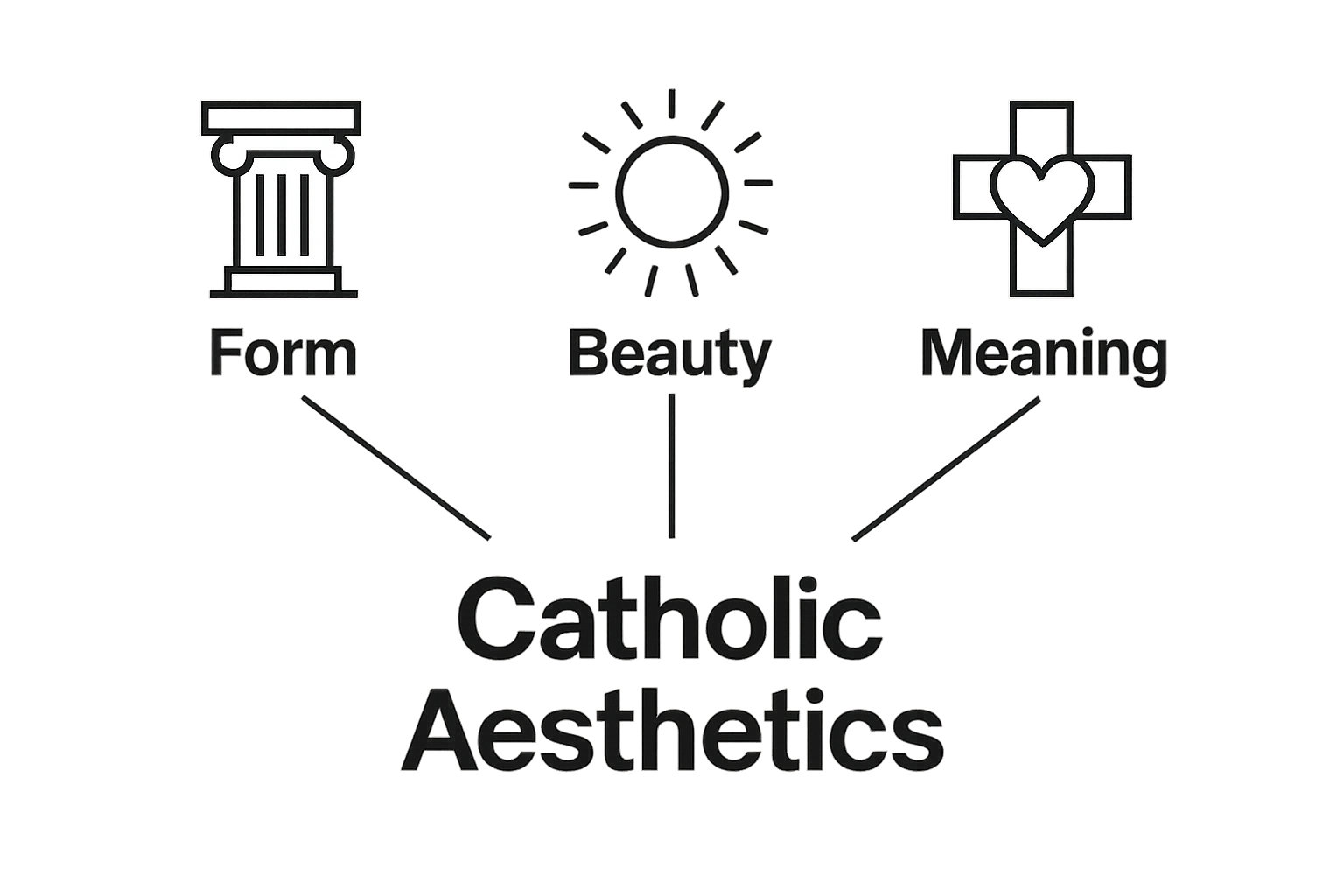
Contemporary Applications of Catholic Aesthetics in Modern Life
Catholic aesthetics continues to evolve, demonstrating remarkable adaptability in connecting traditional spiritual expression with contemporary cultural contexts. Far from being a static historical concept, this aesthetic tradition actively engages with modern experiences, transforming how individuals perceive and interact with spiritual symbolism in everyday life.
Digital and Visual Media Expressions
Catechesis through artistic communication reveals how Catholic aesthetic principles are being reimagined in digital platforms and contemporary visual media. Modern artists and designers are developing innovative approaches that translate traditional theological concepts into accessible, engaging formats.
Key contemporary manifestations include:
- Social media graphics exploring spiritual themes
- Digital illustrations of religious narratives
- Multimedia presentations of theological concepts
- Contemporary graphic design incorporating sacred symbolism
Theological Aesthetics in Everyday Experience
According to global aesthetic research, Catholic aesthetic principles are increasingly being applied beyond traditional artistic domains. These principles now inform design thinking, environmental consciousness, and personal spiritual practices.
Explore modern Catholic design perspectives that demonstrate how aesthetic traditions can be dynamically reinterpreted. Contemporary applications show that Catholic aesthetics is not about reproducing historical imagery, but about creating meaningful spiritual experiences in current cultural contexts.
Ultimately, Catholic aesthetics in modern life serves as a bridge between ancient theological wisdom and contemporary human experience. It invites individuals to encounter spiritual depth through familiar, accessible visual languages that resonate with current cultural expressions.
This table compares traditional and contemporary applications of Catholic aesthetics, illustrating how core principles are adapted across different contexts.
| Application Context | Key Characteristics | Example Manifestations |
|---|---|---|
| Traditional | Emphasis on classic forms, sacred materials, and historic symbolism | Gothic cathedrals, stained glass windows, religious icons |
| Contemporary | Integration with modern media and digital formats | Social media graphics, digital illustrations, modern apparel |
| Everyday Experience | Design thinking, environmental mindfulness, spiritual practices | Thematic home décor, faith-based graphic tees, eco-conscious art |

Bring Catholic Aesthetics to Daily Life With Meaningful Art and Design
You have just explored how Catholic aesthetics is more than decoration. It shapes our faith, fills our spaces with beauty, and creates conversation about spiritual truths. Yet, so much of what you see in the world feels disconnected from this deep tradition. Many Catholics struggle to find art and clothing that proudly bridges tradition and modern style without feeling outdated or clichéd. Our mission is to make Catholic symbolism accessible, relevant, and bold for public spaces, homes, and hearts. Discover pieces that honor what you believe while inspiring dialogue and reflection. Visit our curated Catholic wall art collection, each print crafted to transform your environment into a living reflection of faith.

Ready to make Catholic aesthetics part of your everyday life and conversation? Explore our full selection at Deus Design or browse our Gifts for Catholics for special occasions throughout the year. Choose art and apparel that embodies your values, sparks curiosity, and helps keep the spirit of sacred beauty alive—one space, one soul at a time.
Frequently Asked Questions
What is the significance of beauty in Catholic aesthetics?
Beauty in Catholic aesthetics is viewed as a reflection of divine truth. It forms a pathway to understand God’s glory and communicate spiritual realities, serving as an invitation to contemplation and deeper faith.
How does Catholic aesthetics function as a visual theology?
Catholic aesthetics functions as a visual theology by ensuring that every artistic element carries symbolic meaning. This includes the use of sacred architecture and religious art to convey theological concepts and invite viewers into reflective spiritual experiences.
What are some key principles of Catholic aesthetics?
Key principles of Catholic aesthetics include the representation of divine transcendence, symbolic communication of spiritual truths, honoring sacred traditions, and creating environments that inspire contemplation and worship.
How does contemporary culture influence Catholic aesthetics?
Contemporary culture influences Catholic aesthetics by adapting traditional spiritual expressions through modern media, such as digital art and graphic design. This evolution allows for meaningful spiritual experiences that resonate with current cultural contexts while remaining grounded in theological wisdom.




